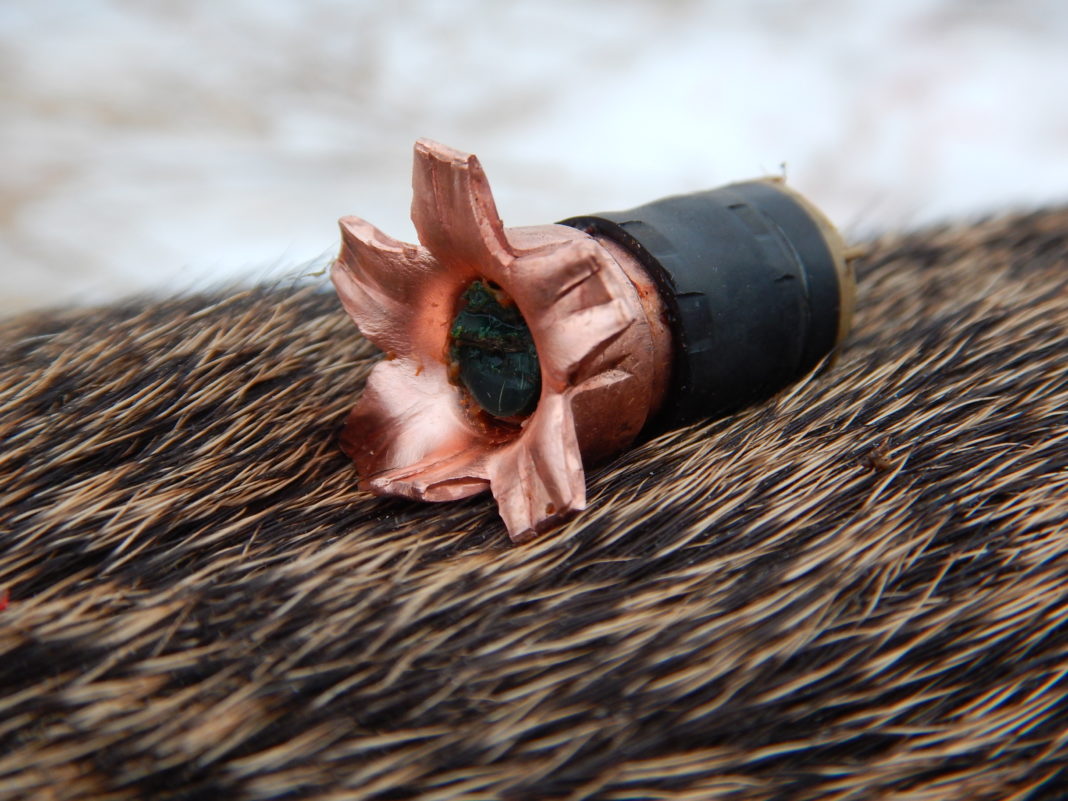 I hope you get to enjoy a late season muzzleloading deer hunt. Human pressure is usually very light and the deer woods settles down to near normal. One choice you may need to make is the bullet for the best result on whitetail deer (or mule deer if you’re lucky enough to hunt in the West). For my money, you can’t beat the new copper bullets offered by Federal, Hornady, Barnes, and others. Why? Let me relate a story that’s always on my mind when hunting with a front-loader.
I hope you get to enjoy a late season muzzleloading deer hunt. Human pressure is usually very light and the deer woods settles down to near normal. One choice you may need to make is the bullet for the best result on whitetail deer (or mule deer if you’re lucky enough to hunt in the West). For my money, you can’t beat the new copper bullets offered by Federal, Hornady, Barnes, and others. Why? Let me relate a story that’s always on my mind when hunting with a front-loader.
 I was hunting in Virginia during their special muzzleloading season when a big buck came trotting toward me. It passed at 50 yards and I swung, filled the air with smoke, and went to look for the results. The deer passed over a carpet of freshly fallen leaves and there was not a hair or spot of blood. I followed the tracks as best I could and saw no sign of a hit with the lead bullet. Later in the year, I saw the outfitter of the area who told me he found a dead buck so large he had it mounted about 100 yards from where I had shot. Had I hit the buck or was this a coincidence? I’ll never know, but the possibility has made me keenly aware of muzzleloading hits on deer.
I was hunting in Virginia during their special muzzleloading season when a big buck came trotting toward me. It passed at 50 yards and I swung, filled the air with smoke, and went to look for the results. The deer passed over a carpet of freshly fallen leaves and there was not a hair or spot of blood. I followed the tracks as best I could and saw no sign of a hit with the lead bullet. Later in the year, I saw the outfitter of the area who told me he found a dead buck so large he had it mounted about 100 yards from where I had shot. Had I hit the buck or was this a coincidence? I’ll never know, but the possibility has made me keenly aware of muzzleloading hits on deer.
Lead bullets often expand quickly and do not leave an exit wound. Hopefully, they do enough damage to down the animal quickly and leave sufficient sign to trail and retrieve the animal. Copper bullets, as mentioned above, expand pedals, which actually cut through tissue and rarely stay inside of the animal. This assures a large wound channel and that you will have plenty of sign to follow. I’ve seen no difference in accuracy or velocity between lead and copper bullets of the same weight. Take a look at Federal Premium’s new Trophy Copper bullets; they load easily and have no sabot to fall off.
Tell us what you think in the comments section below.



















![The Best Deer Camp Chili [VIDEO] Deer Chili Ingredients, Tomatoes, Chili Spices](/wp-content/uploads/2015/10/Deer-Chili-Deer-Camp-Recipe-218x150.jpg)
![How to Call Elk Early in the Season [VIDEO]](/wp-content/uploads/2016/08/byers003-218x150.jpg)




![Idiots Disturb Hunter: How Would You Have Handled It? [VIDEO]](/wp-content/uploads/2015/10/DSC00110-e1474487693878-100x70.jpg)
![Albino Buck Shocked to Shed His Antlers [VIDEO]](/wp-content/uploads/2015/10/AlbinoDeer-100x70.jpg)